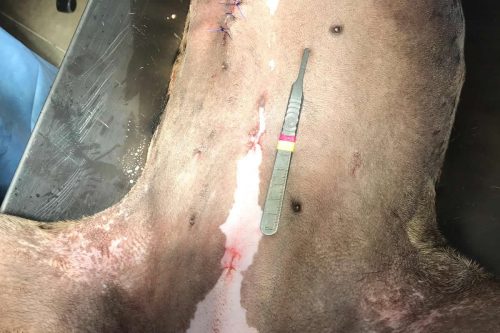Minimally invasive surgery
are those surgical procedures where the approach to the body cavity of the patient (thorax or abdomen) It is performed through small incisions (between 6 and 13 mm), by a specific camera and the surgical instruments introduced.
The main advantages of minimally invasive surgery versus open surgery are:
- Intraoperative less pain and after surgery
- Lower risk of postsurgical infections
- Lower risk of postoperative hernias
- Menor sangrado intraquirúrgico
- Better visualization of small structures for the surgeon and more precision during surgery
Some of the interventions are feasible:
- Female sterilizations (ovariectomy or ovariohisterectomías)
- Removing undescended testicles in the abdomen (cryptorchidism)
- Biopsy of abdominal or thoracic organs (liver, kidney, base, pancreas, Prostate abdomen; lung, pericardium in the thorax)
- Percutaneous placement of feeding devices (PEG)
- gastropexy preventive, in preventing syndrome dilation-torsion of the stomach (SDTE) in large breeds
- pericardiectomy
- Closure of patent ductus arteriosus (PDA)
*NOTE: not all studies or interventions are feasible in all patients. There may be limitations inherent to the own patient (medical condition, size, ongoing treatments, etc) or ourselves (lack of adequate material or technical training). In each case we undertake to study the case of your pet to advise honestly about the test or intervention and indicated whether or not to do it at our facilities.
